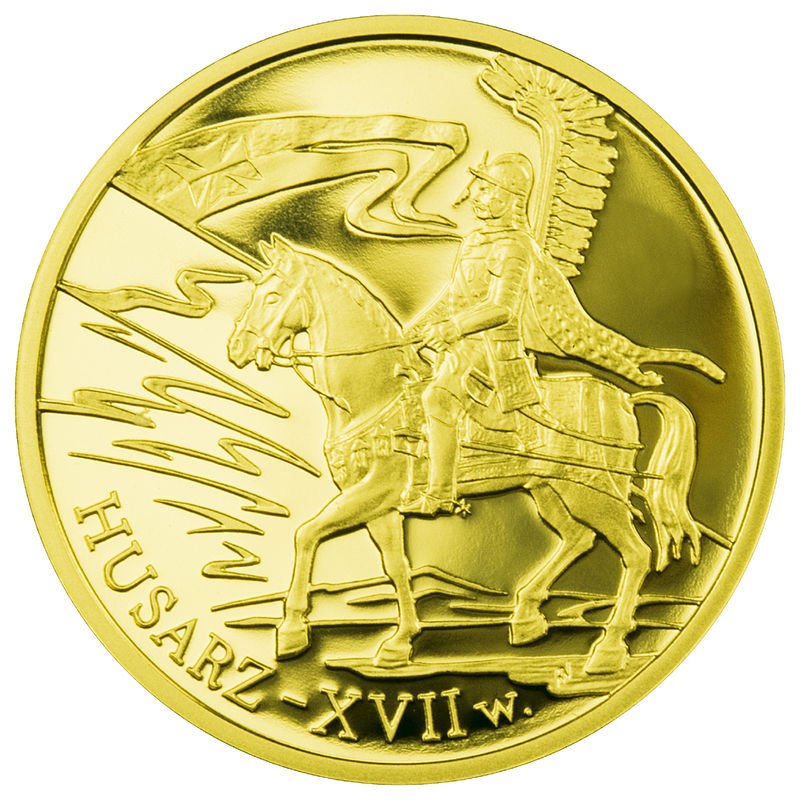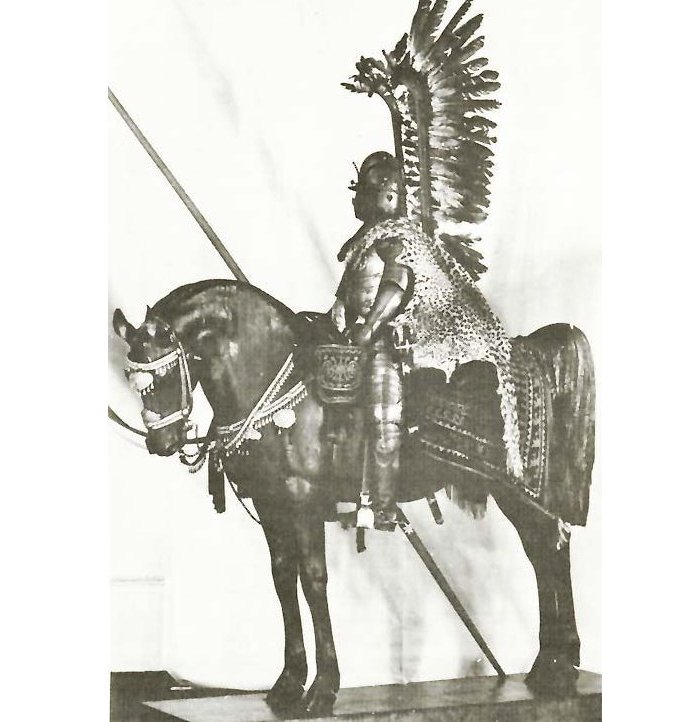Winged Hussars: Facts And History About The Polish Warriors, Their Armor And Military Tactics
Ellen Lloyd - AncientPages.com - The Winged Hussars were one of the most effective military forces in the world. They lost only a fraction of their battles and were undefeated for 125 years. They are remembered for their outstanding courage, great armor, and clever military tactics.
Winged Hussar by Józef Brandt
The Winged Hussars were known for the wings with long feathers worn on their backs or attached to the saddles of their horses, which during a charge, uttered a sound of vibrating feathers that frightened enemy infantry. Who were these courageous warriors, and what made them successful on the battlefield? In this article, we examine the history of the Winged Hussars.
Who Were The Winged Hussars?
The word "hussar" derives from the Hungarian Huszár. Exiled Serbian warriors introduced hussar horsemen – light cavalry armed with hollowed lance, Balkan-type shields, and saber.
The first recorded evidence of hussars can be found in Polish treasury books dated 1500. Initially, these troops were considered only light cavalry and were composed mainly of foreign mercenaries, called "Racowie" (in Polish), meaning "from the Serbian state of Ras."
By the second half of the 16th century and after Stephen Báthory's reforms, hussars had been transformed into heavily armored shock cavalry.
The "winged hussar" arrived with the reforms of the King of Poland and Grand Duke of Lithuania Stephen Bathory in the 1570s and was later led by the King of Poland and Grand Duke of Lithuania Jan III Sobieski.
To differ from Hungarian hussars, Polish-Lithuanian hussars came with their style, and their armor was entirely different. Until the reforms of the 1770s, the husaria banners were considered the elite of the Polish cavalry. It was not until the 1570s that the Polish Hussars finally came into full glory. It was the Golden era when the Polish-Lithuanian Commonwealth had become one of Europe's largest, most powerful, and most populated nations.
The Polish hussars are depicted on the commemorative 200 złotych gold coin. source
Each of the hussars was recruited from wealthier Polish and Lithuanian nobility, and together they were referred to as the "Szlachta."
Winged Hussars And Their Famous Battles
Winged Hussars were used as elite Polish-Lithuanian shock troops for over two centuries. The Winged Hussars fought battles against various enemies, most of which they won.
In the battles of Lubiszew in 1577, Byczyna (1588), Kokenhausen (1601), Kircholm (1605), Kluszyn (1610), Chocim (1621), Martynów (1624), Trzciana (1629), Ochmatów (1644), Beresteczko (1651), Polonka (1660), Cudnów (1660), Chocim (1673), Lwów (1675), Vienna (1683), and Párkány (1683), they proved to be the decisive factor against often overwhelming odds.
With the Battle of Lubiszew in 1577, the 'Golden Age of the husaria began.
The Battle of Lubiszew was one of the most important battles fought during the reign of the Polish-Lithuanian Commonwealth. It was waged against Danzig, whose citizens refused to accept the election of Stephen Batory as King of the Commonwealth and thus ensued the two-year Danzig Rebellion. The battle took place on April 17, 1577, to the west of the town of Tczew (Dirschau), southeast of Gdansk, on the left bank of the Vistula River. Despite their overwhelming numbers, the Danzig army was utterly defeated by the army of Jan Zborowskik.
One of the Polish Hussars' most significant victories occurred on June 23, 1601, in the Battle of Kokenhausen. Despite overwhelming numbers, Polish forces were able to defeat the Swedish army. In the aftermath of the battle, the Poles had lost 200 men, while the Swedes lost 2,000 men, including almost all of their infantry. The 2,000 Swedes who had besieged Koknese Castle, wanting no part in the battle, had surrendered to the Poles, their weapons confiscated by the Polish forces.
The Battle of Kircholm, one of the significant battles in the Polish-Swedish War, was fought on September 27, 1605.
The Winged Hussars launched a devastating charge against the enemy, ending the battle in the decisive victory of the Polish-Lithuanian forces.
Hussar armour and equipment of about 1640. (Polish Army Museum, Warsaw)
It is remembered and celebrated today as one of the greatest triumphs of the Polish Hussars. The battle was decided in all of 20 minutes.
In the Battle of Kluszyn 1610, during the Polish–Muscovite War, the Russians outnumbered the Commonwealth army 5 to 1, yet were heavily defeated.
The Armor And Military Tactics Of The Winged Hussars
Why the hussars had enormous wings on their backs remains a subject of speculation, but this armor was most likely used as part of psychological warfare to scare the enemy.
These wings were made from wooden frames and eagle, ostrich, or swan feathers. Some suggest that wings were worn to make the charge look larger and scare enemy horses. Some historians suggest that these wings offered some protection from sabres or Tatar lassos.
The Polish-Lithuanian hussars' primary battle tactic was the charge. They carried the charge to and through the enemy. It was a key to their victories. The hussars fought with a long lance, a szabla (sabre), 1 or 2 pistols, and often with a carbine or arquebus, known in Polish as a bandolet, and sometimes a war hammer or light ax. Their armor and horses' charging attack and heavyweight guaranteed victory for nearly two centuries.
The Hussar's Lance was constructed differently than medieval lances, as its center was bored out to save weight, and it was longer than its precursors - many were even 5.5m long- but were still lighter than western lances.
Heavy cavalry had fewer uses on the battlefield as guns and artillery improved. Winged Hussars were finally disbanded in 1776 when they were succeeded by much lighter Uhlans, light cavalry armed with lances, sabres, and pistols. To some, the winged hussars were great heroes. Other people consider them the most brutal cavalry force in the world for most of the 16th and 17th centuries.
The Winged Hussars were victorious, although they often had fewer men than their opponents.
In the Battle of Kluszyn, the Russians had 35,000 troops, and the Crown of Poland only had 6,800. However, Poland came out of the battle as the victor.
Written by Ellen Lloyd – AncientPages.com
Updated on February 16, 2023
Copyright © AncientPages.com All rights reserved. This material may not be published, broadcast, rewritten or redistributed in whole or part without the express written permission of AncientPages.com
Expand for referencesMore From Ancient Pages
-
 Exceptional Collection Of Well-Preserved Stucco Masks Of The Mayan Kingdom Reveal Their Secrets
Archaeology | Dec 5, 2022
Exceptional Collection Of Well-Preserved Stucco Masks Of The Mayan Kingdom Reveal Their Secrets
Archaeology | Dec 5, 2022 -
 Study Sheds Light On Life Beyond Rome’s Frontier
Archaeology | Jun 2, 2022
Study Sheds Light On Life Beyond Rome’s Frontier
Archaeology | Jun 2, 2022 -
 Archaeologists uncover new Yup’ik artifacts near Quinhagak, Southwest Alaska
Artifacts | Aug 28, 2015
Archaeologists uncover new Yup’ik artifacts near Quinhagak, Southwest Alaska
Artifacts | Aug 28, 2015 -
 Grandfather Frost And Snow Maiden Bring Gifts On New Year’s Eve
Christmas Traditions | Dec 31, 2024
Grandfather Frost And Snow Maiden Bring Gifts On New Year’s Eve
Christmas Traditions | Dec 31, 2024 -
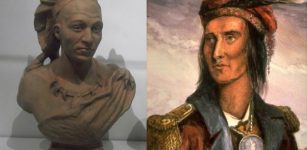 Tecumseh: Native American Mystic, Warrior, Hero And Military Leader Of The Shawnee
Featured Stories | Jun 3, 2016
Tecumseh: Native American Mystic, Warrior, Hero And Military Leader Of The Shawnee
Featured Stories | Jun 3, 2016 -
 The Untold Story Of Sacsayhuamán – Falcon’s Place Is Not What It Seems
Ancient Mysteries | Apr 28, 2020
The Untold Story Of Sacsayhuamán – Falcon’s Place Is Not What It Seems
Ancient Mysteries | Apr 28, 2020 -
 Nazar Amulet – Blue Color Wards Off The Evil Eye According To Ancient Belief
Ancient Symbols | Mar 13, 2018
Nazar Amulet – Blue Color Wards Off The Evil Eye According To Ancient Belief
Ancient Symbols | Mar 13, 2018 -
 Stone Tools In Lapa do Picareiro Cave Reveal Modern Humans Reached Western Parts Of Europe 5,000 Years Earlier Than Previously Thought
Archaeology | Sep 30, 2020
Stone Tools In Lapa do Picareiro Cave Reveal Modern Humans Reached Western Parts Of Europe 5,000 Years Earlier Than Previously Thought
Archaeology | Sep 30, 2020 -
 ‘Face Of First European’ – Oldest Fossil Of European Human Ancestor Found At Spain’s Atapuerca Archaeological Site
Archaeology | Jul 9, 2022
‘Face Of First European’ – Oldest Fossil Of European Human Ancestor Found At Spain’s Atapuerca Archaeological Site
Archaeology | Jul 9, 2022 -
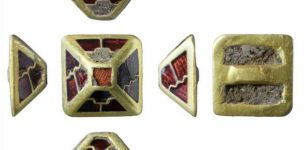 Magnificent ‘Sword Pyramid’ Lost By A Sutton Hoo-Era Lord Discovered In Norfolk
Archaeology | Aug 21, 2021
Magnificent ‘Sword Pyramid’ Lost By A Sutton Hoo-Era Lord Discovered In Norfolk
Archaeology | Aug 21, 2021 -
 Kahina – The Prophetic Berber Queen Who Resisted The Muslim Invasions Of The Numidia Kingdom
Featured Stories | Aug 14, 2021
Kahina – The Prophetic Berber Queen Who Resisted The Muslim Invasions Of The Numidia Kingdom
Featured Stories | Aug 14, 2021 -
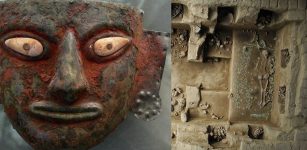 Ancient Tomb Of Peru’s Moche Priestesses Unearthed
Archaeology | Jul 23, 2016
Ancient Tomb Of Peru’s Moche Priestesses Unearthed
Archaeology | Jul 23, 2016 -
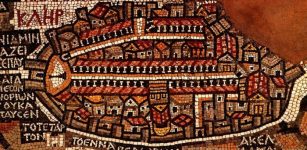 Stunning Madaba Map: Oldest Known Mosaic Built Of Two Million Stone Cubes
Civilizations | Jun 16, 2017
Stunning Madaba Map: Oldest Known Mosaic Built Of Two Million Stone Cubes
Civilizations | Jun 16, 2017 -
 Xochicalco: Stunning Ruins Of Sacred City Linked To Maya and Aztecs Civilizations
Featured Stories | Feb 26, 2018
Xochicalco: Stunning Ruins Of Sacred City Linked To Maya and Aztecs Civilizations
Featured Stories | Feb 26, 2018 -
 World’s Oldest Wooden Structure Discovered And It Predates Homo Sapiens – Archaeologists Say
Archaeology | Sep 20, 2023
World’s Oldest Wooden Structure Discovered And It Predates Homo Sapiens – Archaeologists Say
Archaeology | Sep 20, 2023 -
 Controversial Discovery Of Rama’s Bridge – A 1,700,000 Year Old Man-Made Structure
Featured Stories | Jun 19, 2014
Controversial Discovery Of Rama’s Bridge – A 1,700,000 Year Old Man-Made Structure
Featured Stories | Jun 19, 2014 -
 Caribbean Silk Cotton Tree And Its Dangerous Spirits In Myths And Legends
Featured Stories | Jan 29, 2024
Caribbean Silk Cotton Tree And Its Dangerous Spirits In Myths And Legends
Featured Stories | Jan 29, 2024 -
 What Happened To The Mysterious And Beautiful Queen Nefertiti?
Featured Stories | Apr 4, 2017
What Happened To The Mysterious And Beautiful Queen Nefertiti?
Featured Stories | Apr 4, 2017 -
 Kentucky’s Little-Known Ancient Underground City And Mysterious Lost Civilization
Featured Stories | Jun 13, 2024
Kentucky’s Little-Known Ancient Underground City And Mysterious Lost Civilization
Featured Stories | Jun 13, 2024 -
 Long-Standing Mystery Of What May Have Triggered Ice Age Solved – New Study
Archaeology | Jun 24, 2022
Long-Standing Mystery Of What May Have Triggered Ice Age Solved – New Study
Archaeology | Jun 24, 2022


